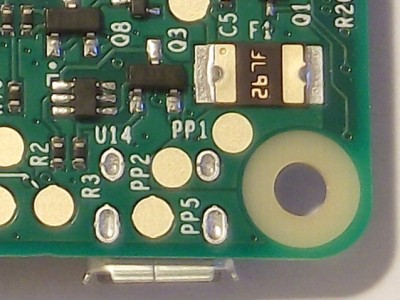This is an old revision of the document!
Alternative Power for the Raspberry Pi
One has a rich assortment of power supplies with USB connectors, USB-A, USB-B, Mini-USB, Micro-USB, still none of them fits into the Pi's Pwr In header. At least not on a Pi 3 Model B.
Too bad. Let's have a look how else we can get juice into this device.
Voltage Injection via GPIO Pins
According to the eLinux wiki, one can apply 5 V to one or both of the red pins and GND to one of the black pins (see diagram to the right) to get a Raspberry Pi running.
Drawback of this approach is, this goes around the Pi's power in protections, like the overload fuse. So, take care to have a reasonable stable voltage supply. Another obvious drawback is, one can no longer plug in a typical extension board.
Additional Power Connector
Not fearing a soldering iron there are better ways. Looking at the (reduced) schematics we can see the Power In circuitry in the upper left corner. And there are points we can connect GND: connector housing and PP3 to PP6, as well as PP1 and PP2 for connecting 5 volts. This time without going around the Pi's protection circuitry.
This part is common the the Pi 2 Model B and the Pi 3 Model B. The Pi 3 Model B+ is a bit different, but still features PP2. Pis before the Pi 2 have no such PP points.
We also see that all three data lines of the USB connector are entirely disconnected, so there's no chance to mess that up.
Finding Solder Pads
Having a close look at the lower right corner of the Pi's PCB on the back side one can easily identify PP1 and PP2 as test points, which easily dub as solder pads. One can also see that the right side of the fuse (this bigger part labeled 267F) is directly connected to these test points. Several places to solder a wire delivering 5 volts to.
Finding a solder pad for connecting GND is just as easy. There's not only PP5 clearly visible, one can also use one of these four ovals which clamp the Power In USB connector to the board. Well, perhaps three usable ones, because the upper right oval is surrounded by the 5 V copper track.


